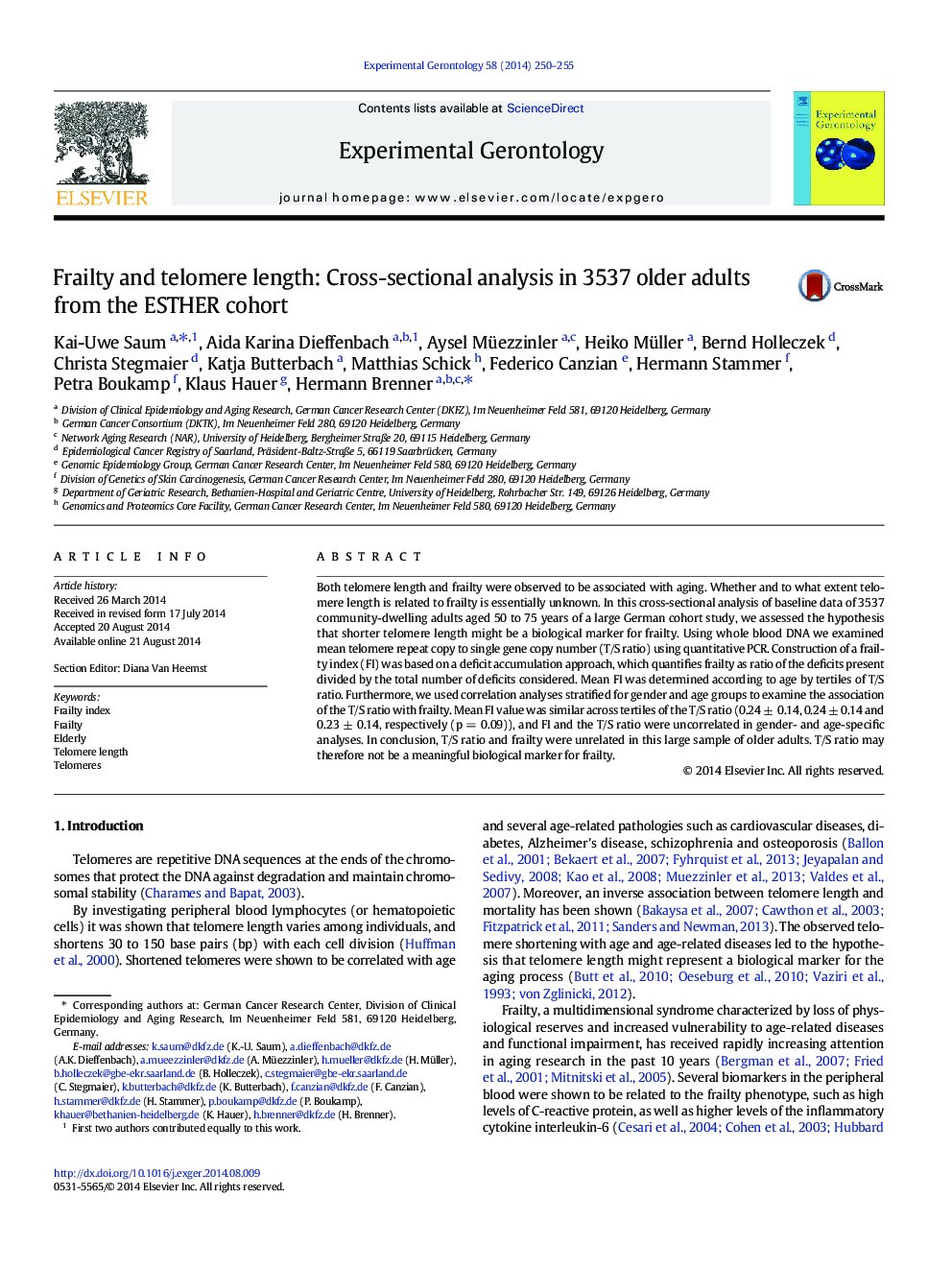| Article ID | Journal | Published Year | Pages | File Type |
|---|---|---|---|---|
| 1906279 | Experimental Gerontology | 2014 | 6 Pages |
•Telomere length was inversely related to age but uncorrelated with a frailty index.•Women were more frail but had longer telomeres compared to men.•Findings suggest that telomere length is not a meaningful biomarker for frailty.
Both telomere length and frailty were observed to be associated with aging. Whether and to what extent telomere length is related to frailty is essentially unknown. In this cross-sectional analysis of baseline data of 3537 community-dwelling adults aged 50 to 75 years of a large German cohort study, we assessed the hypothesis that shorter telomere length might be a biological marker for frailty. Using whole blood DNA we examined mean telomere repeat copy to single gene copy number (T/S ratio) using quantitative PCR. Construction of a frailty index (FI) was based on a deficit accumulation approach, which quantifies frailty as ratio of the deficits present divided by the total number of deficits considered. Mean FI was determined according to age by tertiles of T/S ratio. Furthermore, we used correlation analyses stratified for gender and age groups to examine the association of the T/S ratio with frailty. Mean FI value was similar across tertiles of the T/S ratio (0.24 ± 0.14, 0.24 ± 0.14 and 0.23 ± 0.14, respectively (p = 0.09)), and FI and the T/S ratio were uncorrelated in gender- and age-specific analyses. In conclusion, T/S ratio and frailty were unrelated in this large sample of older adults. T/S ratio may therefore not be a meaningful biological marker for frailty.
